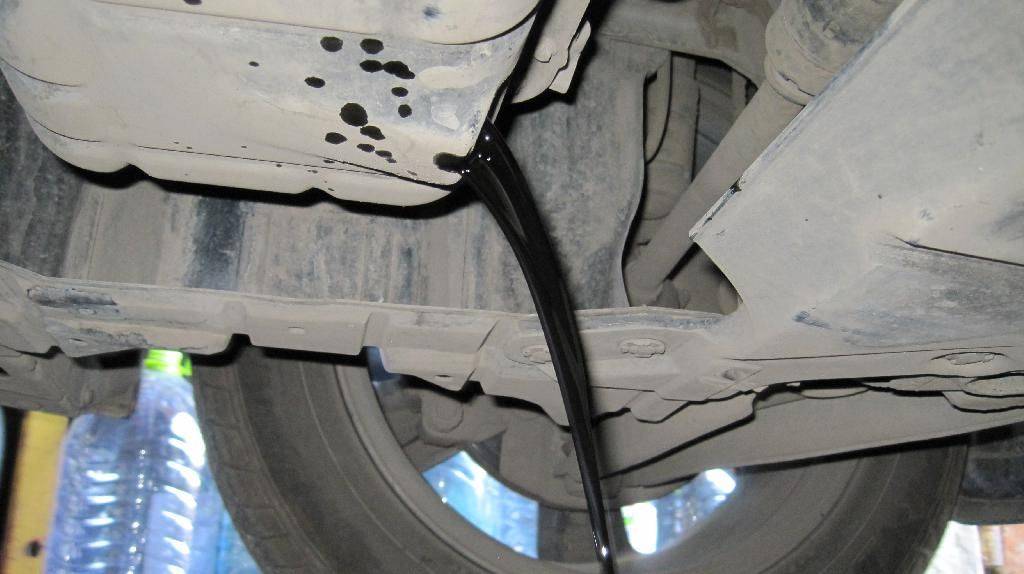When and how much to pour oil into the engine?
Maintenance and replacement of consumables (filters, liquids, oils) is one of the most relevant topics for every car enthusiast, regardless of the brand of its car. A rather large percentage of the total number of cars is served by their owners independently, and this percentage is growing steadily. Knowing how much oil is needed into the engine, everyone can master the simple replacement process and successfully perform without complete financial costs.
The amount of lubrication in the power units of various cars
Before proceeding with the development of the oil change procedure in the engine, you need to find out several points.
- What kind of lubricant can be used for the power unit of your car depending on the season of operation and loads?
- How much oil is needed in the engine?
- What is the gap between the replacements of consumables?
On most of these questions, the answer can give instructions for the operation of the machine from the manufacturer's plant. But not always this document is available by the owner, for example, in the case of buying a used car. Again, the instruction offers data on interservice runs with reference to the recommended brand of engine oil. If it is changed, then the gap between the replacements may change.
For example, if instead of the offered semi-synthetics, start pouring a mineral lubricant, then it will have to be changed more often. And only filling oil oil remains for each car unchanged. A considerable role is played by the conditions for the operation of each individual vehicle. Riding in highland areas, moving large and small trailers with cargo, operation on roads without solid coating - all these factors lead to an increased formation of a car on the details of the power unit and their accelerated wear.
The engine oil is also rapidly wear out, and the more often it has to change it. For this reason, it is necessary to find out the volume of oil in the engine and other nodes and aggregates once. The table presents some enlarged data on the number of motor lubrication in domestic production cars.
After examining the table, you can draw the following conclusion: the more working volume of the power unit, the greater the amount of lubrication is required for it. The same pattern exists in foreign production engines. Enlarged data show that for imported motors, a working volume from 1.8 to 2.4 l, the oil refueling volume is 4.2-4.3 liters, and you can navigate if any accompanying documentation from the manufacturer in the car is missing.
To specify the data specifically for each foreign car, you can contact the official dealer of the brand, which can also acquire the recommended lubricants.
What affects motor lubrication consumption?
 Extreme operating conditions of the car can significantly reduce the life of lubricants
Extreme operating conditions of the car can significantly reduce the life of lubricants It should be noted that the value of the total amount of lubricating materials is indicated in the instruction manual, in practice, during draining, it remains on working surfaces, channels and ducts during its work surfaces, channels and ducts due to its viscosity. That is, not all oil flows out of the engine, respectively, and it will be necessary to pour it less.
It is impossible not to say about the operating flow rate of motor lubrication during operation. It is considered the norm if due to different circumstances (increased loads, aggressive ride style, low fuel quality) is consumed up to 100 grams of oil per 1000 km of mileage. Worn engines can consume and more. Therefore, it is always worth it to have a certain amount of lubrication on topping.
The indicator, how much to pour oil into the motor when replacing, depends on how to drain from the Carter to work out. Some car enthusiasts that have such an opportunity unscrew the plug plug by arrival in the garage and leave it open until the morning. This allows spent lubricant overnight to thoroughly extort from all channels.
Then when pouring the amount of oil to the working level will be very close to what is indicated in the passport of the machine. If you perform the replacement procedure in conditions of limited time and on a badly warm engine, then it can remain up to 200 grams of working out, which will affect the durability of the unit and will be noticeable when pouring a new lubricant.
Here are some tips that allow you to correctly determine the filling volume of motor lubrication. 
- Throughout it is always necessary to merge from a heated motor, especially during the cold season. The spent hot lubricant will not be so thick and viscous, so the flow from the crankcase is faster and easier.
- Do not forget to unscrew the plug of the filling neck on the valve cover, this will avoid a small vacuum in the internal space of the engine. If this is not done, the development will flow slower.
- It is not necessary to hurry when performing the procedure, give a well-widen oil. It is necessary to pause after twisting the cork and after dismantling the oil filter, ideally up to 30 minutes.
- When filling out fresh lubricants, navigate the scale on the canister and the level between the minimum and maximum probe marks. To do this, immediately fill in a minimum, then start the engine for a couple of minutes, drown out and wait 10 minutes while the oil stalks into the crankcase. After that, finally check the level and should be addressed if necessary.
The volume of oil in the engine, which is close to overhaul, is better maintained at the maximum level, giving a small amount of increased consumption. Checking the level of the dipstream in this case should be carried out quite often, every 1000 km. If this is not done, you can "peck" when the level falls below the minimum and the oil starvation will come, and this is fraught with serious faults.










